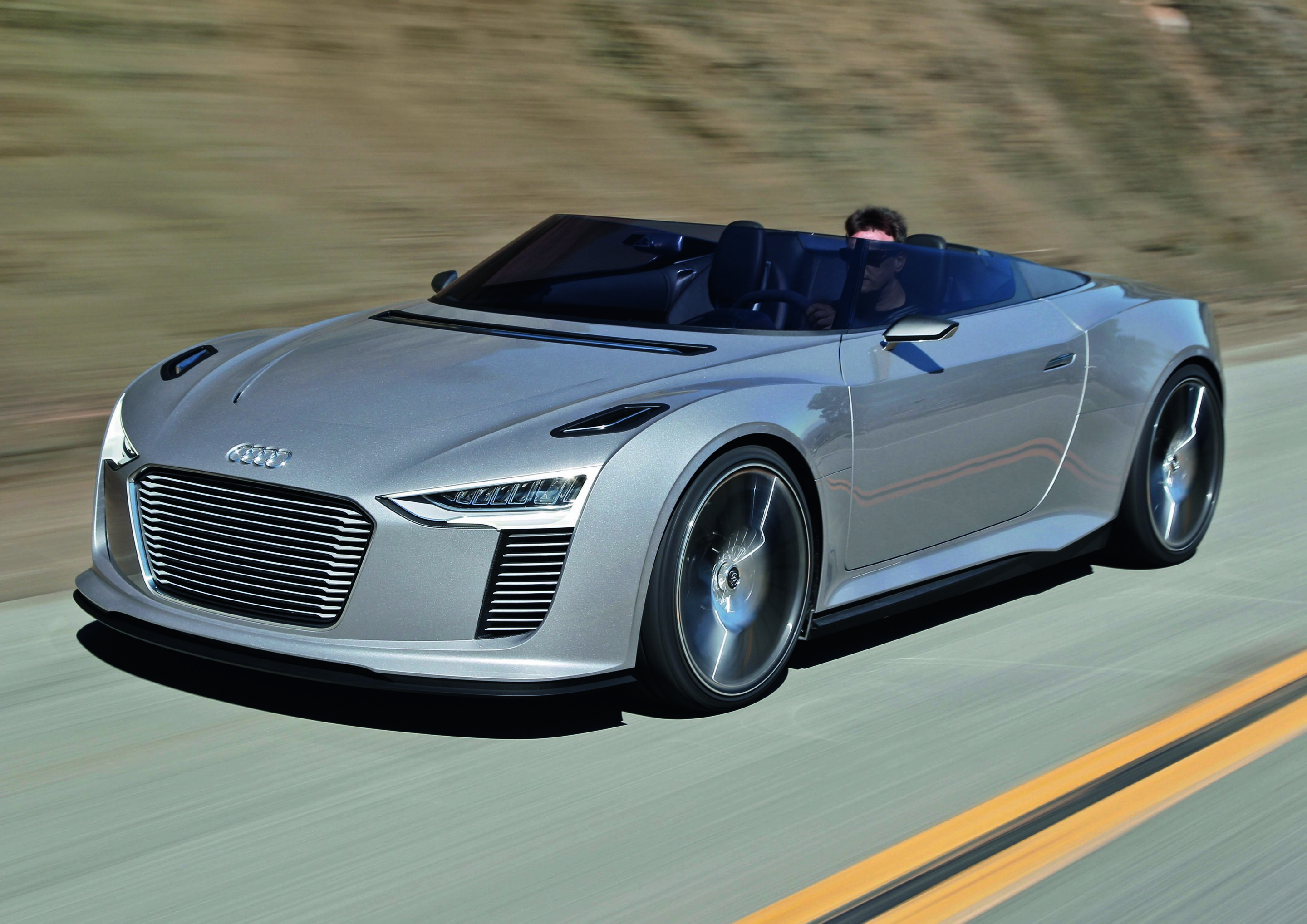Search
All results
(726)
MediaInfos
(251)
News
(2)
BasicInfos
(10)
Press kits
(5)
Images
(200)
Videos
(74)
Publications
(20)
Technical Details
(40)
 Audi drivers and race car in Geneva
Audi drivers and race car in Geneva
Rahel Frey, who is active in GT3 racing with Audi, was a guest at gasmobil’s booth, where she promoted the alternative fuel with a natural gas powered Audi A3 Sportback g-tron.
 Audi e-tron Spyder
Audi e-tron Spyder
Paris - Audi presents the Audi e-tron Spyder, the study of an open sports car, at the fall 2010’s largest auto show. The show car, with plug-in hybrid drive, is 4.06 meters (13.32 ft) long, 1.81 meters (5.94 ft) wide and only 1.11 meters (3.64 ft) high. The two-seater is equipped with a 221-kW (300-hp) twin-turbo V6 TDI at the rear axle and two electric motors producing a total of 64 kW at the front axle.
The Audi e-tron Spyder’s low total weight of only around 1,450 kilograms (3,196.70 lb) combined with the high-torque TDI and the two electric motors results in respectable performance. The car accelerates to 100 km/h (62.14 mph) in just 4.4 seconds, and top speed is electronically governed at 250 km/h (155.34 mph). The e-tron Spyder can combine the powerful torque of its TDI – the diesel engine generates 650 Nm (479.42 lb-ft) and the total of 352 Nm (259.62 lb-ft) of its two electric motors during acceleration in a process known as “boosting.” The intelligent distribution of power allows for optimal dynamics in every situation. The targeted application of power to the front wheels improves longitudinal dynamics while also improving lateral dynamics when cornering. This is because torque vectoring – the as-needed distribution of torque between the left and right wheels of the two axles – enables an exhilarating degree of driving precision and excellent agility. Thanks also to its low weight, short wheelbase and perfect 50:50 weight distribution for dynamic handling, the Audi e-tron Spyder has all the drivability of a go-kart – good on bends and neutral right up to the very high handling limit. The combination of a highly efficient TDI and electric drive also provides for excellent fuel economy and amazingly low emissions. The Audi e-tron Spyder requires on average just 2.2l diesel/100 km (106.92 US mpg), corresponding to CO2 emissions of 59 g/km (94.95 g/mile). A range of more than 1,000 kilometers is possible with the 50-liter (13.21 US gallons) tank.